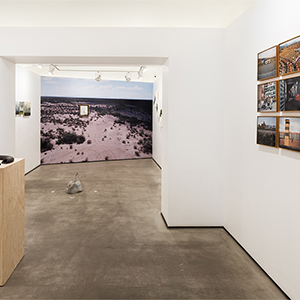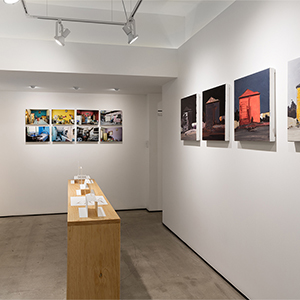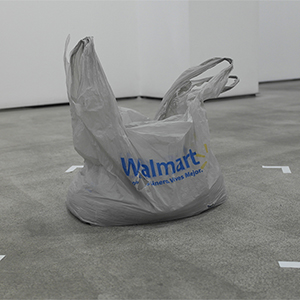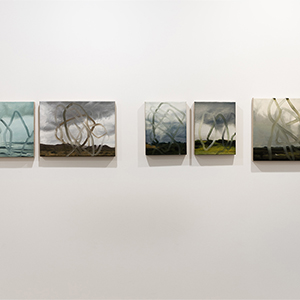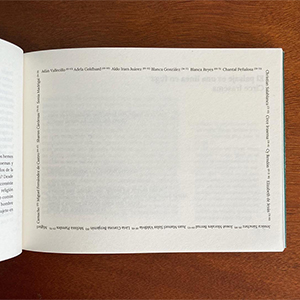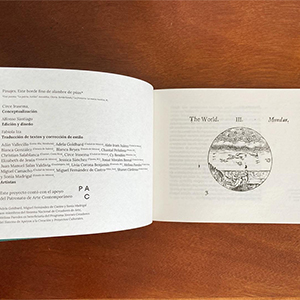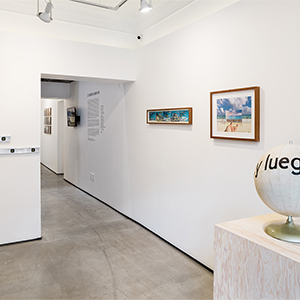
Este borde fino de alambre de púas* (This fine barbed wire edge) is a compilation of postures and creative processes of various artists, coming from different latitudes, which are semantically, affectively and conceptually woven around the concept of “landscape.” These emphasize two aspects: the first, as a critical statement from an experiential and testimonial angle about the territory, based on an encounter, or disagreement, with the environment: the border, the suburbs, the plain, the tropics, among others. The projects are the result of the intersection between socioeconomic and political conflicts within the habitat, and result in a visual equation that reflects the consequences of forced displacement, environmental deterioration, excessive urban growth, as well as the exploitation and appropriation of natural resources. . Secondly, the ideal of “landscape” is explored and confronted from its plastic meaning; Addressing problems of representation that range from architecture to geography, they seek to alter or blur the very limits of the word itself, giving rise to a particular approach to said genre.
From a holistic perspective, this curatorship functions as an index of behind-the-scenes processes or developments: it brings together sketches, files, texts or photographs about the journeys and materials found by its authors; It is an intimate instrument that seeks to reproduce the unknown or furtive part of the artistic production it calls for. The present work develops and puts into crisis the preconceived image of said concept, investigating fissures about what is understood, but also what is annulled, of the “landscape.” Likewise, its task is to mow down the synonyms that accompany the word not only from the symbolic but also from the social praxis, which delimit a collective imagination currently in rupture.
*Anzaldúa, Borderlands / La frontera: La nueva mestiza, 41.
§
Este borde fino de alambre de púas * es una compilación de posturas y procesos creativos de diversas artistas, provenientes de distintas latitudes, que se entraman de forma semántica, afectiva y conceptual en torno al concepto de “paisaje”. Éstas enfatizan dos aristas: la primera, como enunciado crítico desde un ángulo experiencial y testimonial sobre el territorio, a partir de un encuentro, o desencuentro, con el entorno: la frontera, lo conurbado, el llano, los trópicos, entre otros. Los proyectos son el resultado del cruce entre los conflictos socioeconómicos y políticos dentro del hábitat, y derivan en una ecuación visual que plasma las consecuencias del desplazamiento forzado, el deterioro ambiental, el crecimiento urbano desmedido, así como la explotación y la apropiación de recursos naturales. En segundo lugar, el ideal de “paisaje” se explora y confronta desde su acepción plástica; atendiendo a problemas de representación que oscilan desde la arquitectura hasta la geografía, buscan alterar o desdibujar los propios límites del mismo vocablo, dando lugar a un enfoque particular de dicho género.
Desde una perspectiva holística, ésta curaduría funciona como un índice de procesos o desarrollos tras bambalinas: reúne bosquejos, archivos, textos o fotografías sobre los recorridos y materiales encontrados por sus autoras; es un instrumento íntimo que busca reproducir la parte incógnita o furtiva de la producción artística que convoca. La presente obra desarrolla y pone en crisis la imagen preconcebida de dicho concepto, inquiriendo fisuras acerca de lo que se sobrentiende, pero también de lo que se anula, del “paisaje”. Igualmente, su cometido es apolillar los sinónimos que acompañan al vocablo no sólo desde lo simbólico sino también desde la praxis social, los cuales delimitan un imaginario colectivo actualmente en quiebre.
*Anzaldúa, Borderlands / La frontera: La nueva mestiza, 41.
